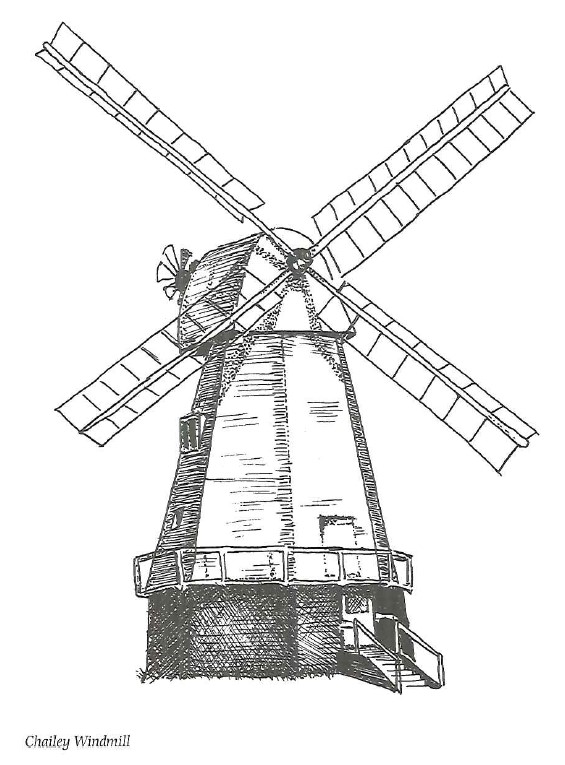For years, until the arrival of mains drainage, residents had to endure the unkind newspaper catchphrase and headline the smelliest village in Sussex’. An unfortunate and unfitting label for a place that was the seat of one of the county’s most noble families, the Pelhams.
They lived at Laughton Place, a lonely mansion built by Sir William Pelham (prudent in peace and valiant in war’) during the reign of Henry VIII on the bleak levels below the village. All that remains of the building today is the central tower, though happily this has recently been restored and modernised. It bears the Pelham buckle, crest of the family since Sir John Pelham captured King John of France at Poitiers and was given the buckle of the King’s surrendered sword as a keepsake.
Legend has it that a secret tunnel ran from the mansion to the crypt of the village church a good mile away where the coffins of more than 30 Pelhams are interred.
Laughton Place was one of the first brick-built buildings in the county, and the manufacture of bricks was a major industry here; the village once had four brickworks and they were used in the repair of Hastings Castle. The last kilns did not go out until just before the Second World War. Pottery, too, thrived here and continues to do so to this day.
The latter years of the war were tragic for Laughton. A flying bomb landed at Shortgate, killing four people and flattening the main post office and Bell Inn (now rebuilt as The Bluebell). When the Rev Pearson produced a history of the parish in the 1920s he looked to the Pelham crest for a title, The Village of the Buckle. It is a nickname that has stuck in a community where the population has remained constant since the distant days when folk started to keep count.
The old landlord at The Roebuck used to claim that he was the only mine host in the country entitled to charge for a glass of water. A bit of a stretcher, perhaps, but there was a deal of truth in it. Mains water did not come here until the 1950s and when their wells ran dry in times of drought the locals went to The Roebuck which had a well that never failed and they were able to get their water there. For those that could not get about a water cart would deliver to the door, at a cost. The conditions were so notoriously primitive that no evacuees were sent here during the war.
A ploughman struck lucky in recent years when he unearthed the ‘Laughton treasure’, a jar crammed with 600 silver halfcrowns bearing the head of Charles I. How this Civil
War hoard came to be buried at Park Farm is a mystery, but it is now in a safe place at The Barbican Museum in Lewes.
A belt of Sussex Marble, or Winklestone, stretches under the earth across the Weald in a line from Benenden in Kent to deep inside West Sussex and one of its richest veins occurs at Laughton. Local sculptor Glen Moore has taken advantage of the rich source literally on his doorstep by producing jewellery and other items from this lovely stone, which varies in colour from cream to dark purple.
